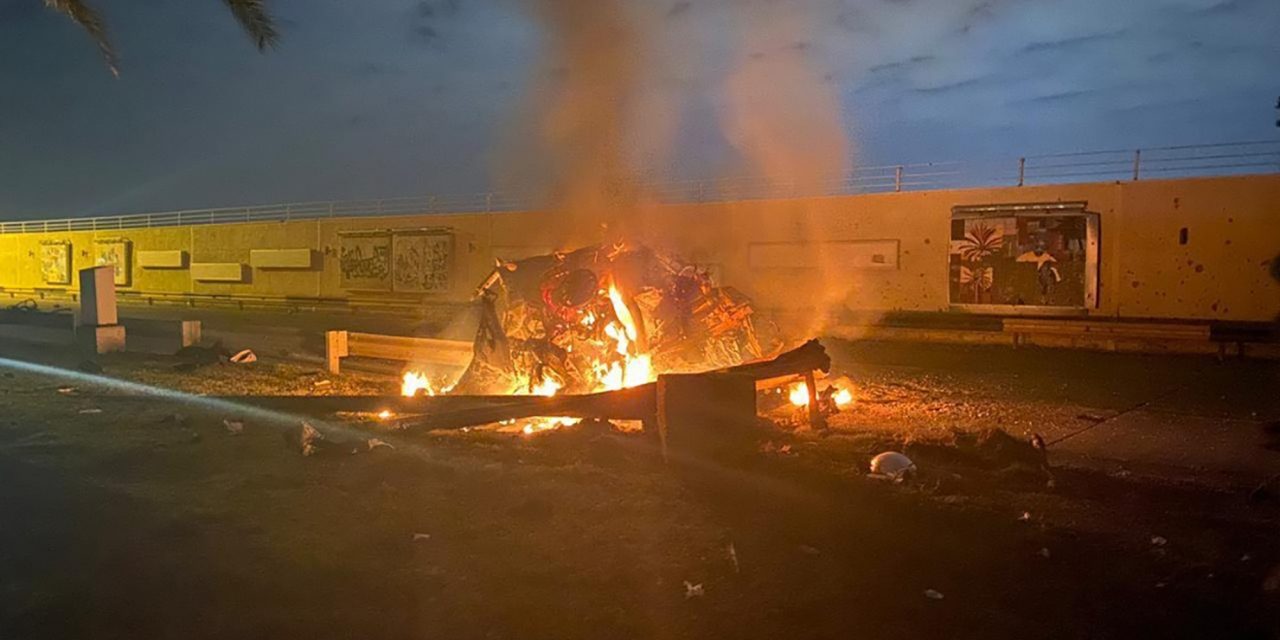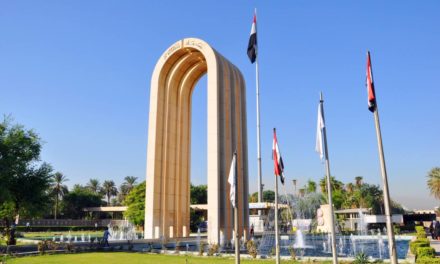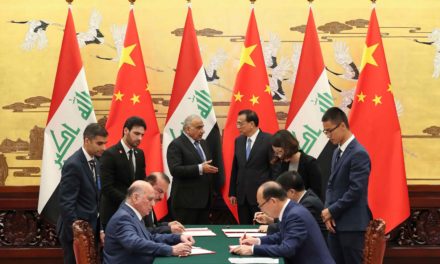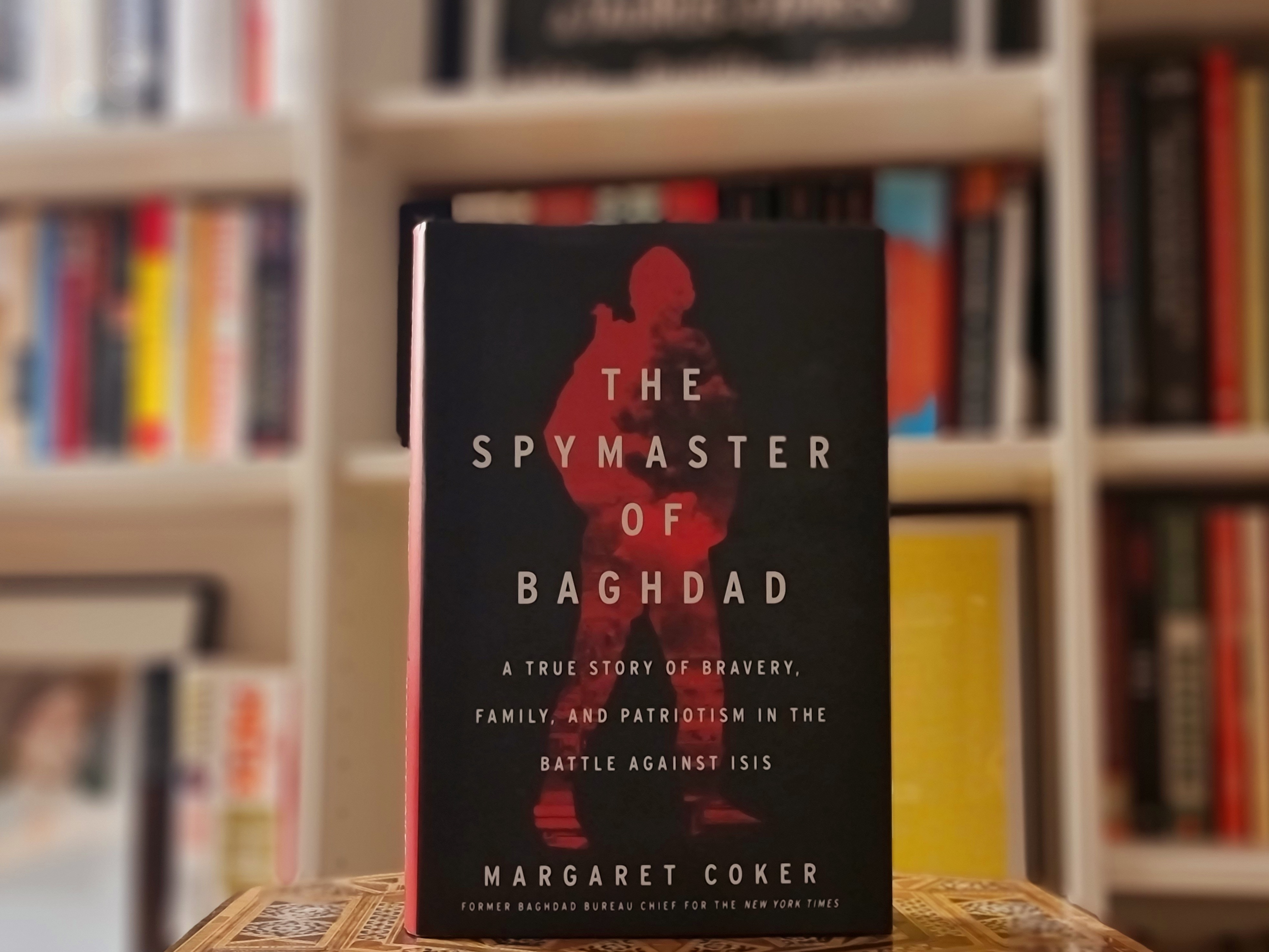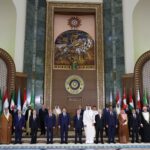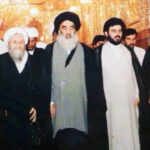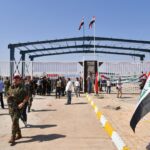(Photo: Associated Press)
The recent events in Iraq – from the assassination of Quds Force Commander Major General Qassim Soleimani along with Deputy Leader of the Popular Mobilization Forces (PMF) Abu Mahdi al-Muhandis in Baghdad, to the events surrounding the siege of the U.S. Embassy by the PMF, raise very important questions regarding the escalation of hostilities in the region.
The U.S. airstrike in the vicinity of Baghdad International Airport on 3 January 2020, which resulted in the assassination of Major General Qassim Soleimani, commander of the Quds Force in the Islamic Revolutionary Guard Corps (IRGC) along with the Deputy Leader of the PMF in Iraq, Jamal Ibrahim (Abu Mahdi al-Muhandis); had been preceded by the earlier attack by the U.S. on PMF and Kattaib Hezbollah bases in both Iraq and Syria under the pretext of revenge for the attacks on the U.S. base in Kirkuk and the siege of the U.S. Embassy in Baghdad by thousands of members of the PMF which culminated in the burning of one of the outer perimeter gates of the Embassy.
On the evening of Sunday, 29 December 2019, the Americans launched an attack on the positions and bases of the 45th Brigade forces affiliated with the PMF and Kattaib Hezbollah in Iraq and Syria, stationed in the Al-Qa’im region, west of Anbar Province, killing and wounding dozens of PMF fighters.
This attack followed the attacks on the U.S. base in Kirkuk, “K1”, located 15 kilometres northwest of Kirkuk, where American forces are stationed, along with elements from both the Iraqi Federal Police and the Counter-Terrorism Service. According to statements released to the press, the United States justified its attacks as being in response to the actions of Iran’s proxies in Iraq, and also pointed the finger directly at Iran. By dint of this analysis, the United States has sought to demonstrate that it can both respond whilst at the same time limit its actions against Iran in the wake of regional developments that have taken place in recent months. In reality, the U.S. wanted to maintain its prestige, for President Donald Trump, who has for a long time been planning to take on Iran, saw the current circumstances as being conducive to his agenda. In the present circumstances, the following contextual issues may be analyzed as follows:
First, the assessment by the U.S. authorities is that, under the current circumstances, Iran is preoccupied with domestic developments, chaos, and riots that have diminished its capacity and social capital, and therefore has lost its regional focus and is now in a position of weakness.
Secondly, the United States views the developments in Iraq over recent months as evidence of the decline in Iran’s soft power, and the waning popular support for Iran as an opportunity to demonstrate strength.
Thirdly, Washington aims to curtail Iran’s regional footprint, reduce its influence in the region and to keep it occupied with domestic issues; and having reached the conclusion that economic pressure and sanctions alone are not sufficient, is now applying a policy involving a mix of sanctions and pressure alongside regional action against Iran.
The overarching aim of the United States is to push Iran back to within its borders and to transform regional alliances against Tehran, so that it can rein in Iran through domestic and regional pressure. The United States believes that the present situation serves its agenda well and will not accommodate any compromise towards Iran. Therefore, Iran sees the need for continued active resistance, and a decisive, urgent, proportionate and deterrent response in such circumstances as the only way to prevent America from pushing forward with its current agenda. It is quite plausible that the United States has embarked on a course of action that could jeopardize its immediate security with its allies in the region, with far-reaching consequences for the region.
Meanwhile, many observers believe that Iran’s response to the assassination of Soleimani by the United States, which took the form of missile attacks on Ein al-Assad and other U.S. military bases in Erbil, has thrust the Middle East into a new maelstrom of upheavals. Notwithstanding, what is the true impact of the missile strikes, on the American military bases in Iraq, on the Iranian scene, in particular, and on the region as a whole? Why did Iran retaliate so swiftly, and in the manner they did, that is with a “missile strike, following the assassination of the commander of the Al-Quds Force in the Revolutionary Guards?
The Islamic Revolutionary Guards’ comprehensive targeting of U.S. military bases should not be interpreted solely on the basis of a “rebalancing of power” exercise but perhaps should be viewed as being more in the nature of terrorizing or intimidating the other side and, I believe, a warning that Iran will retaliate in the future with greater force than just a missile strike.
The reality is that following the assassination of Major General Qassim Soleimani, Iranian officials were quick to conclude that they had to persuade public opinion of a broad retaliation against the United States and further that whatever form the retaliation takes, it would involve the lowest cost and come with minimum losses to Iran. The Iranians further believe that the local, regional and international political and social psyche is now ready and receptive to any action or retaliation on the part of Iran to avenge the assassination of Soleimani. It is also highly likely that, over time, the repercussions of Iran’s response will face regional and international sensitivities and may also come at a higher cost than Iran is willing to accept.

Hayder Al-Khafaji
Hayder Al-Khafaji is a researcher on Middle Eastern affairs with a specialist focus on Iraq-Iran relations. He holds a postgraduate certificate in Islamic Studies from Birkbeck College, University of London, and a master’s degree from Middlesex University where he is currently completing a Professional Doctorate in Muslim cultures.

